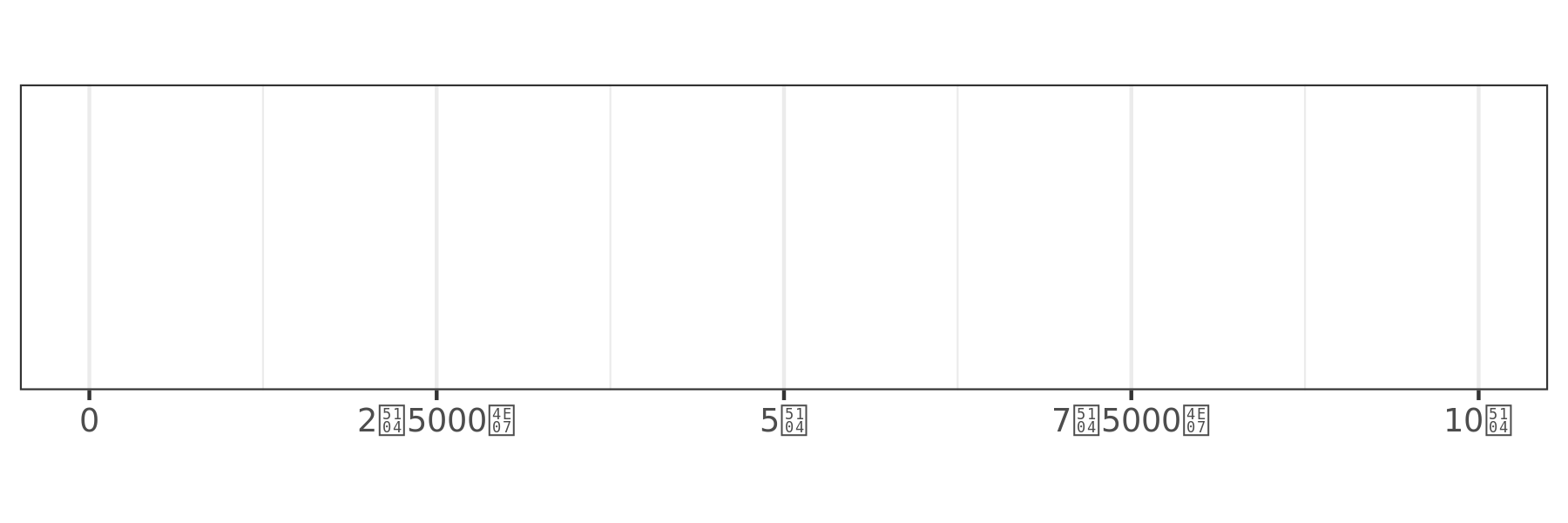

The goal of {zipangu} is to replace the functionality
provided by the {Nippon} archived from CRAN. Add some
functions to make it easier to treat data that address, year, Kanji and
Kana.
You can install the released version of {zipangu} from
CRAN with:
install.packages("zipangu")and also, the developmment version from GitHub
install.packages("remotes")
remotes::install_github("uribo/zipangu")library(zipangu)separate_address("東京都千代田区大手町一丁目")
#> $prefecture
#> [1] "東京都"
#>
#> $city
#> [1] "千代田区"
#>
#> $street
#> [1] "大手町一丁目"Applied to data frame.
library(dplyr, warn.conflicts = FALSE)
data.frame(address = c("東京都千代田区大手町一丁目", "岡山県岡山市北区清心町16-13")) %>%
mutate(address_components = purrr::pmap(., ~ separate_address(..1))) %>%
tidyr::unnest_wider(col = address_components)
#> # A tibble: 2 × 4
#> address prefecture city street
#> <chr> <chr> <chr> <chr>
#> 1 東京都千代田区大手町一丁目 東京都 千代田区 大手町一丁目
#> 2 岡山県岡山市北区清心町16-13 岡山県 岡山市北区 清心町16-13read_zipcode(system.file("zipcode_dummy/13TOKYO_oogaki.CSV", package = "zipangu"), "oogaki")
#> # A tibble: 1 × 15
#> jis_code old_zi…¹ zip_c…² prefe…³ city_…⁴ stree…⁵ prefe…⁶ city street is_st…⁷
#> <chr> <chr> <chr> <chr> <chr> <chr> <chr> <chr> <chr> <dbl>
#> 1 13101 100 1000001 トウキ… チヨダ… チヨダ 東京都 千代… 千代田 0
#> # … with 5 more variables: is_banchi <dbl>, is_cyoumoku <dbl>,
#> # is_zipcode_duplicate <dbl>, status <dbl>, modify_type <dbl>, and
#> # abbreviated variable names ¹old_zip_code, ²zip_code, ³prefecture_kana,
#> # ⁴city_kana, ⁵street_kana, ⁶prefecture, ⁷is_street_duplicateYou can also load a file directly by specifying a URL.
read_zipcode("https://www.post.japanpost.jp/zipcode/dl/jigyosyo/zip/jigyosyo.zip")Utilities
is_zipcode(7000027)
#> [1] TRUE
is_zipcode("700-0027")
#> [1] TRUE
zipcode_spacer("305-0053")
#> [1] "305-0053"
zipcode_spacer("305-0053", remove = TRUE)
#> [1] "3050053"
is_prefecture("東京都")
#> [1] TRUEconvert_jyear("R1")
#> [1] 2019convert_jdate("平成元年11月25日")
#> [1] "1989-11-25"Given a year and holiday name as input, returns the date.
jholiday_spec(2022, "New Year's Day", lang = "en")
#> [1] "2022-01-01"Holiday names can be specified in English (“en”) and Japanese (“jp”) by default, en is used.
jholiday_spec(2022, "Coming of Age Day", lang = "en")
#> [1] "2022-01-10"
jholiday_spec(2022, "\u6210\u4eba\u306e\u65e5", lang = "jp")
#> [1] "2022-01-10"Check the list of holidays for a year with the
jholiday().
jholiday(2022, lang = "jp")
#> $元日
#> [1] "2022-01-01"
#>
#> $成人の日
#> [1] "2022-01-10"
#>
#> $建国記念の日
#> [1] "2022-02-11"
#>
#> $天皇誕生日
#> [1] "2022-02-23"
#>
#> $春分の日
#> [1] "2022-03-21"
#>
#> $昭和の日
#> [1] "2022-04-29"
#>
#> $憲法記念日
#> [1] "2022-05-03"
#>
#> $みどりの日
#> [1] "2022-05-04"
#>
#> $こどもの日
#> [1] "2022-05-05"
#>
#> $海の日
#> [1] "2022-07-18"
#>
#> $山の日
#> [1] "2022-08-11"
#>
#> $敬老の日
#> [1] "2022-09-19"
#>
#> $秋分の日
#> [1] "2022-09-23"
#>
#> $スポーツの日
#> [1] "2022-10-10"
#>
#> $文化の日
#> [1] "2022-11-03"
#>
#> $勤労感謝の日
#> [1] "2022-11-23"Use is_jholiday() function to evaluate whether today is
a holiday.
is_jholiday("2022-01-10")
#> [1] TRUE
is_jholiday("2022-02-23")
#> [1] TRUEstr_jconv("アイウエオ",
str_conv_hirakana, to = "hiragana")
#> [1] "あいうえお"
str_conv_zenhan("ガッ", "zenkaku")
#> [1] "ガッ"
str_conv_romanhira("aiueo", "hiragana")
#> [1] "あいうえお"kansuji2arabic(c("一", "百"))
#> [1] "1" "100"
kansuji2arabic_all("北海道札幌市中央区北一条西二丁目")
#> [1] "北海道札幌市中央区北1条西2丁目"harmonize_prefecture_name(
c("東京都", "北海道", "沖縄県"),
to = "short")
#> [1] "東京" "北海道" "沖縄"
harmonize_prefecture_name(
c("東京", "北海道", "沖縄"),
to = "long")
#> [1] "東京都" "北海道" "沖縄県"library(scales)
library(ggplot2)
theme_set(theme_bw(base_family = "IPAexGothic"))
demo_continuous(c(1, 1e9), label = label_kansuji())
demo_continuous(c(1, 1e9), label = label_kansuji_suffix())
jpnprefs
#> # A tibble: 47 × 5
#> jis_code prefecture_kanji prefecture region major_island
#> <chr> <chr> <chr> <chr> <chr>
#> 1 01 北海道 Hokkaido Hokkaido Hokkaido
#> 2 02 青森県 Aomori-ken Tohoku Honshu
#> 3 03 岩手県 Iwate-ken Tohoku Honshu
#> 4 04 宮城県 Miyagi-ken Tohoku Honshu
#> 5 05 秋田県 Akita-ken Tohoku Honshu
#> 6 06 山形県 Yamagata-ken Tohoku Honshu
#> 7 07 福島県 Fukushima-ken Tohoku Honshu
#> 8 08 茨城県 Ibaraki-ken Kanto Honshu
#> 9 09 栃木県 Tochigi-ken Kanto Honshu
#> 10 10 群馬県 Gunma-ken Kanto Honshu
#> # … with 37 more rowskana(type = "hira")
#> [1] "あ" "い" "う" "え" "お" "か" "き" "く" "け" "こ" "さ" "し" "す" "せ" "そ"
#> [16] "た" "ち" "つ" "て" "と" "な" "に" "ぬ" "ね" "の" "は" "ひ" "ふ" "へ" "ほ"
#> [31] "ま" "み" "む" "め" "も" "や" "ゆ" "よ" "ら" "り" "る" "れ" "ろ" "わ" "を"
#> [46] "ん"
kana(type = "hira", core = FALSE, historical = TRUE)
#> [1] "ゐ" "ゑ"
kana(type = "kata", dakuon = TRUE, handakuon = TRUE, kogaki = TRUE)
#> [1] "ァ" "ア" "ィ" "イ" "ゥ" "ウ" "ェ" "エ" "ォ" "オ" "カ" "ガ" "キ" "ギ" "ク"
#> [16] "グ" "ケ" "ゲ" "コ" "ゴ" "サ" "ザ" "シ" "ジ" "ス" "ズ" "セ" "ゼ" "ソ" "ゾ"
#> [31] "タ" "ダ" "チ" "ヂ" "ッ" "ツ" "ヅ" "テ" "デ" "ト" "ド" "ナ" "ニ" "ヌ" "ネ"
#> [46] "ノ" "ハ" "バ" "パ" "ヒ" "ビ" "ピ" "フ" "ブ" "プ" "ヘ" "ベ" "ペ" "ホ" "ボ"
#> [61] "ポ" "マ" "ミ" "ム" "メ" "モ" "ャ" "ヤ" "ュ" "ユ" "ョ" "ヨ" "ラ" "リ" "ル"
#> [76] "レ" "ロ" "ヮ" "ワ" "ヲ" "ン" "ヴ"